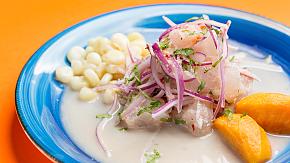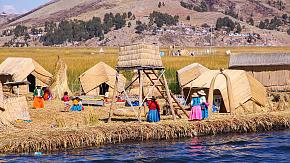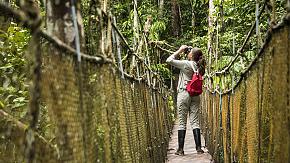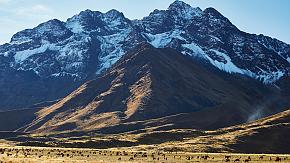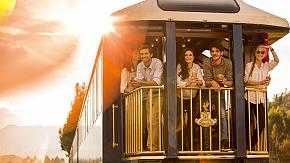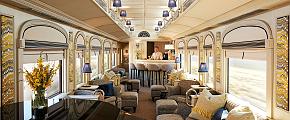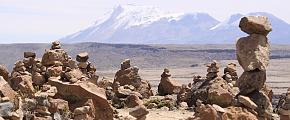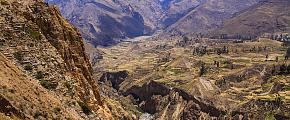Top 12 Festivals in Peru 2026: Gourmet, Music and Dance
As a country with an ancient civilization, Peru has given birth to colorful festivals in its exquisitely beautiful land. Whether you are planning a Peru tour or just feel curious about the culture of this country, let's learn more about the splendor of Peruvian festivals!
- Mistura Food Festival in Lima, Sep 7th, 2026
- Inti Raymi in Cusco, June 24th, 2026
- Fiesta de la Candelaria in Puno, Feb 2nd - 11th
- Peru Independence Day, July 28th, 2026
- Cajamarca Carnival, February 14th to 18th, 2026
- Pisco Sour Day, February 7th, 2026
- Puno Week, First Week of November, 2026
- Qeswachaka in Cusco, June 8th, 2026
- Virgen del Carmen, July 15th - 18th, 2026
- Semana Santa, April 29th March to 5th, 2026
- Señor de los Milagros in Lima, October, 2026
- Ica Vendimia Festival in Ica, March 2026
Mistura Food Festival in Lima, Sep 7th (Estimated Date), 2026
The Mistura Culinary Festival is one of the largest gastronomic festivals in Latin America and takes place every first half of September in Lima. If you are a foodie, then don't miss this unique food festival!
Mistura is organized in a huge, vibrant market. The festival brings together Peruvian cuisine that is as diverse as its geography and food lovers across the world. The festival shows a wide variety of foods, such as Peruvian potatoes, picarones - Peruvian dripped donuts with chancaca syrup, tejas - chocolate truffles from the Peruvian desert, ceviche - raw fish with lime (the national dish), and so on. In addition, there are 16 regions in Peru where cacao varieties are grown, which means you can visit a variety of seminars on cacao production and see how cocoa seeds turn into fragrant thick paste!
Inti Raymi in Cusco, June 24th, 2026
The Inti Raymi festival, which takes place in Cusco on June 24th every year, takes you on a journey through history and back to the splendor of the Inca civilization.
The Incas considered themselves "descendants of the sun." At the end of winter, the Incas gathered in Cusco to pray for the return of the sun god. You can see the grand ceremonies at three locations in Cusco: Qorikancha (the Temple of the Sun), Plaza de Armas (the Square of Arms), and Sacsayhuaman (the Inca ancient stone building). Rainbow flags fly in the wind; people sing and dance; and animal sacrifices are held to pray for a good harvest. People wear traditional robes, which are made of colorful cloth, accompanied by headdresses hung with red tassels. As the climax of the festival approaches, the high priest lights the sacred fire.
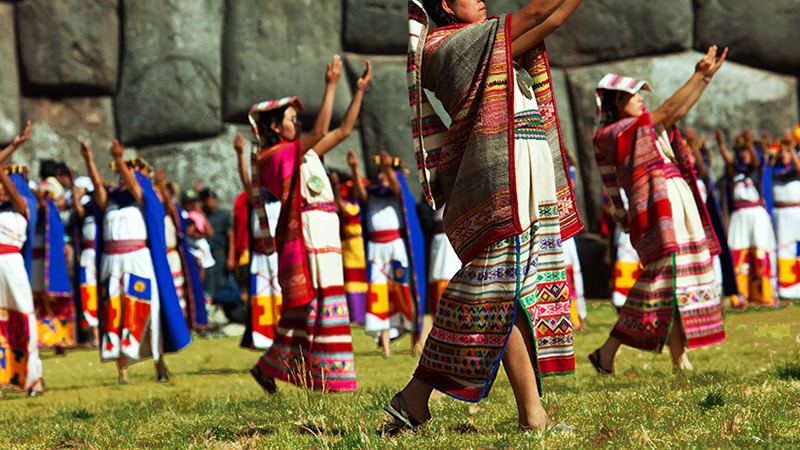 Inti Raymi in Cusco
Inti Raymi in Cusco
Fiesta de la Candelaria in Puno, February 2nd to 11th, 2026
Every year at the beginning of February, the southern Peruvian city of Puno celebrates the "Fiesta de la Candelaria." It is a festival filled with dance and music in honor of the Virgin of Candelaria, the patroness of Puno.
Fiesta de la Candelaria can last for about one to two weeks. Masses, dances, and celebrations will be held throughout the day, starting early in the morning. A statue of Candelaria will be carried in a procession by people, followed by a large band. You can throw flower petals on the statue for good luck; what's more, you'll be treated to a visual feast of many colorful costumes. A vast sea of dance teams and musicians from all over the world dress up in ornate costumes with brightly colored patterns, and exaggerated designs inlaid with shiny pearls, scales, or thick feathers, and are accompanied by masks with fierce eyes and sharp horns.
 Fiesta de la Candelaria
Fiesta de la Candelaria
Peru Independence Day, July 28th, 2026
On Peruvian Independence Day, the national flags will fly above many buildings. The streets will be filled with music and parties. If you want to see a great music show, head to Lima's Muralla Park, where everything from traditional folk songs to modern rock will be played. Shout along with the bustling crowds and soak up the upbeat tunes!
On the second day, the main official event will be the President's address to the public in the Plaza de Armas, followed by the "Te Deum" Mass led by the Archbishop of Lima. You can see a huge military parade: planes and helicopters, artillery and tanks, and squadrons of elite special forces marching through the square in perfect order.
It is also a good time to taste food during Peru's Independence Day because there will be more food vendors on the streets than usual. Just feast on Peruvian cuisine!
Cajamarca Carnival, February 14th to 18th, 2026
The Cajamarca Carnival is an annual celebration held in early March in the town of Cajamarca, which is recognized as the city of Carnival. The main events include the coronation of the Carnival Queen, the parade of floats, water and paint wars, etc.
The Carnival Queen is chosen from among the most beautiful young women in each community. The candidates wear flamboyant costumes and tour the city with lively musical performances. Water and paint wars are a Cajamarca Carnival tradition. People carry buckets of a mixture of paint, water, and flour to throw at each other as if returning to joyful games in childhood. Whether you're young or old, you can unleash yourself in the paint wars! In the parade of Carnival, you can see residents gather, wearing exaggerated colorful dress costumes and huge hats, and sing through the streets. All the streets are filled with revelry!
Pisco Sour Day, February 7th, 2026
Pisco Sour Day is celebrated on the first Saturday of February. Pisco, a cocktail, is one of Peru's official products. As one of the world's 50 best-selling cocktails named in the 2021 Drinks International magazine, the Pisco Sour has evident popularity.
The pisco has a mix of flavors, a colorful appearance, and an intense aroma. The wine is mixed with some syrup, lemon juice, and egg whites. After a good shake, all the flavors blend together just right. Wineries will organize great celebrations where you can sample different piscos and buy some beautiful pisco kits as souvenirs. There will also be food fairs to taste authentic Peruvian food. Ceviche, a popular Peruvian dish, is the perfect pairing with Pisco Sour! There will also be Pisco history exhibitions and concerts to help you know more about the wonderful Pisco Sour.
Puno Week, First Week of November, 2026
Puno Week is a carnival celebration held in November in the town of Puno on the shores of Lake Titicaca. The purpose of Puno Week is to celebrate the legendary birth of Manco Capac. It's said that he rose from Lake Titicaca and founded the Inca Empire.
Puno Week is a week of revelry centered around November 5th. Music and dancing spread from the city to the blue waters of Lake Titicaca. Men, women, and children dressed in colorful clothes and wearing gorgeous masks to make spectacular parades that leave a trail of joy! Just immerse yourself in traditional Andean music and dance and cheer with the crowd. Another highlight of Puno Week is the reenactment of the establishment of the Inca Empire, where you can see wonderful performances about the legendary figure of Manco Capac.
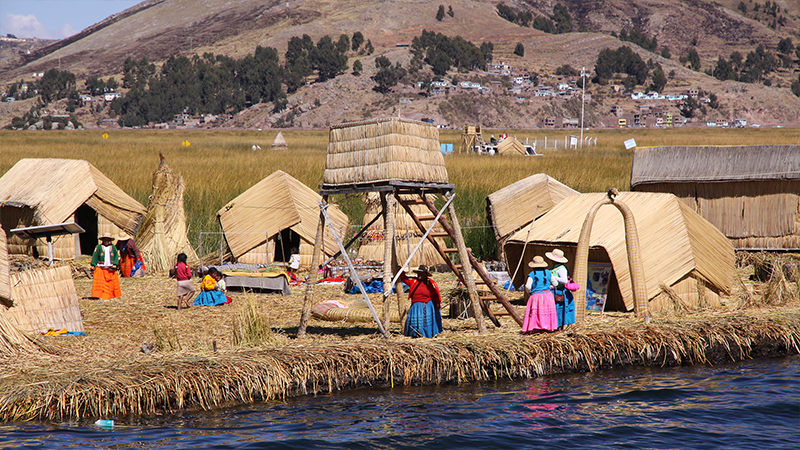 Puno Week Is Held in the Town of Puno on the Shores of Lake Titicaca
Puno Week Is Held in the Town of Puno on the Shores of Lake Titicaca
Qeswachaka in Cusco, June 8th, 2026
The Incas used woven bridges (Inca bridges) to cross rivers and deep canyons. The Qeswachaka rope bridge in Cusco is an excellent example. The bridge has been refurbished by locals every June, which has become a traditional festival for almost 600 years. The main celebration date is usually the second Sunday of June.
When you visit the Qeswachaka, you will see the interesting process of constructing the woven bridge. Before the construction, the leader will ask the mountain gods for permission to begin the process and offer coca leaves and corn. After this offering, the weaving begins. You will see men weaving grass and fibers together with deft hands on both sides of the bridge. The construction culminates on the fourth day, and locals will do native dances and eat traditional foods to celebrate the completion of the bridge.
Virgen del Carmen, July 15th to 18th, 2026
This spectacular festival takes place every year around July 15 in Paucartambo.
The main celebration of the Virgen del Carmen is traditional music and dancing. People wear exaggerated costumes and masks and offer skillful dances. These dances depict important events in Peruvian history. The brightly colored costumes and grotesque masks represent different characters, including demons in fanged masks, warriors with swords, traders, colonists, and guardians of the Virgin del Carmen.
At night, you can enjoy amazing fireworks in the square. Performers throw up lit mounds of grass to create crazy sparks! On the last day of the festival, there is the most remarkable procession of the Virgin. Dancers and guardians carry the huge statue of Carmen through the bustling streets.
Semana Santa, April 29th March to 5th, 2026
What should I do in Peru during Semana Santa? There are great celebrations in several cities. Thousands of people march through the Plaza de Arroyo carrying statues covered with red flowers symbolizing the blood of Christ, which will last for about six hours. You can see classic religious performances in the streets, such as the scene where Jesus met his mother. On Saturday, you can experience an open-air market with music, tons of food, and handicrafts. Also, you can taste the 12-course feast held in honor of Jesus' Last Supper, including six savory dishes and six sweet dishes.
Señor de los Milagros in Lima, October 2026
Señor de los Milagros (Lord of Miracles) is celebrated throughout the month of October in Lima, with multiple processions taking place on different days. The main procession date is October 18, when the largest crowds gather to honor the image of Christ that survived 17th-century earthquakes. Additional processions typically occur in early and mid-October, as part of a month-long observance known as the "Purple Month." This is the most significant religious festival in Peru and a remarkable cultural event for visitors in Lima during October.
Ica Vendimia Festival in Ica, March 2026
The Ica Vendimia Festival (Wine Harvest Festival) celebrates the region's wine and pisco harvest each March. The city of Ica comes alive with parades, grape-stomping contests, winery visits, and tastings of local vintages. Cultural shows and street fairs highlight the area's long winemaking history and festive spirit. It is an excellent time for visitors to explore Ica's vineyards, enjoy regional cuisine, and combine the trip with nearby attractions such as Huacachina.
Plan Your Peru Tour With Odynovo
Come to Peru - the magical ancient country in South America! Go to the land where mountains and coastline coexist and taste the litany of cuisines that have been birthed by it; take part in ancient ceremonies to feel the Inca's worship and reverence; stroll down the bustling streets to revel and frolic with the fancy-dressed people; and immerse yourself in the boundless music!
What Our Clients Say
Explore the latest verified reviews of Odynovo's travel services on Tripadvisor, Google, Trustpilot, Product Review and more trusted platforms.

